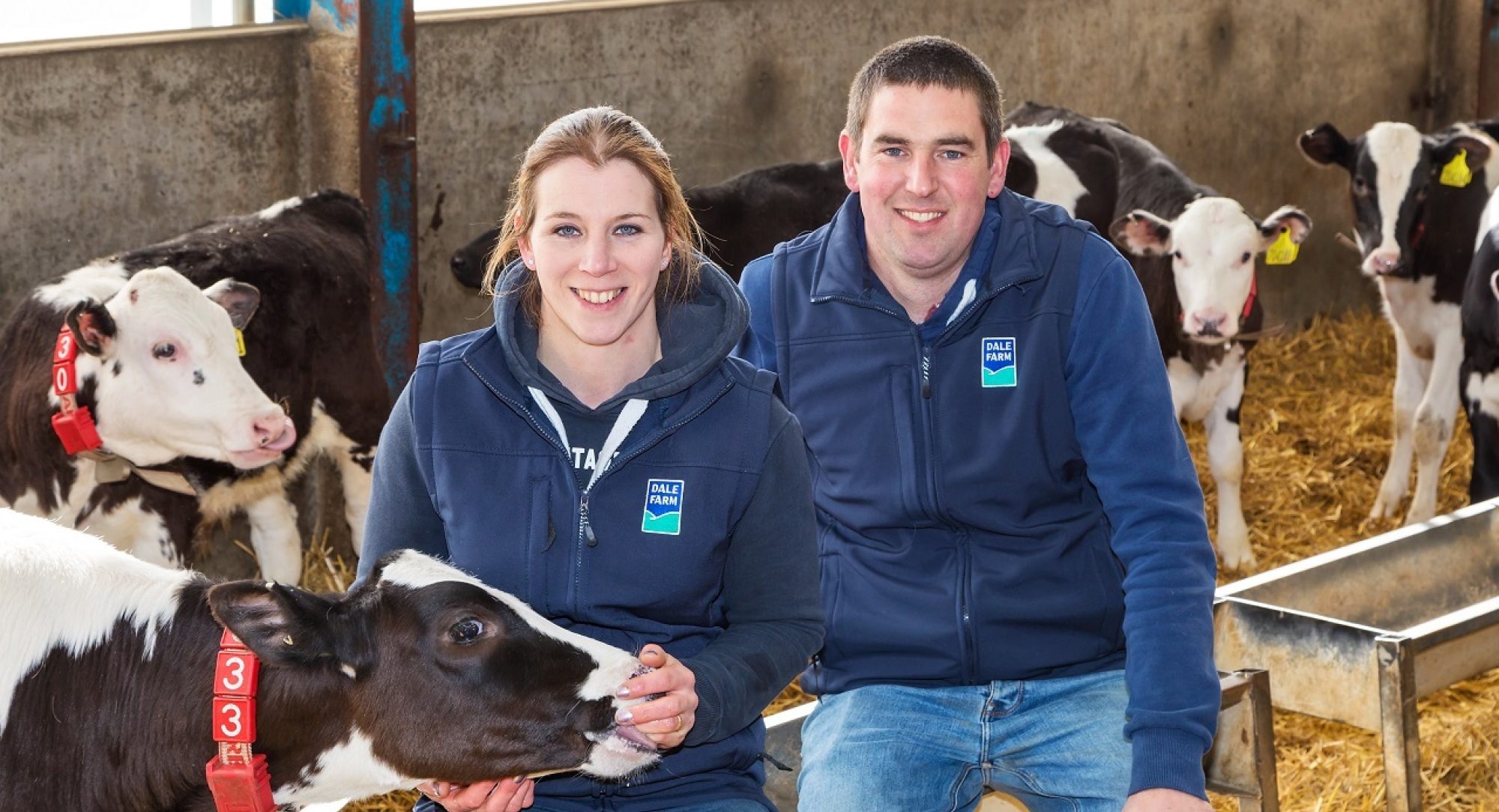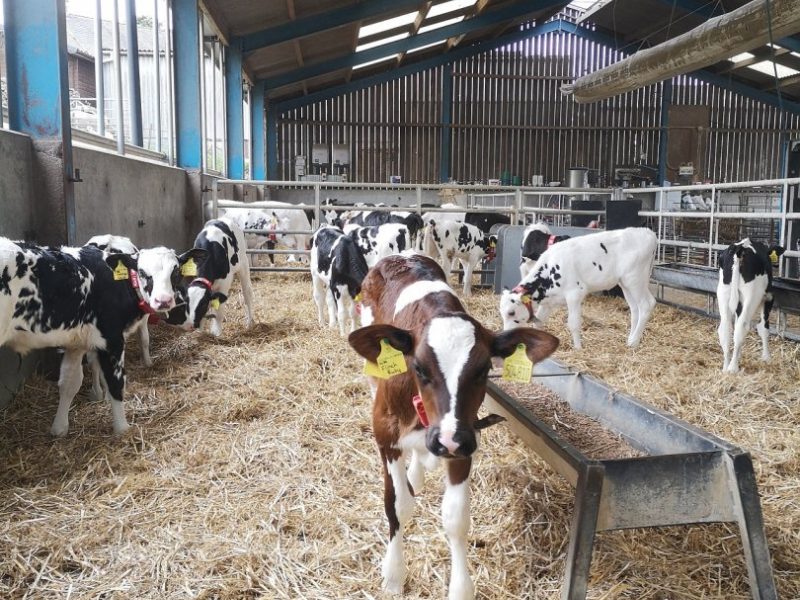John Young and his wife Nicola milk 470 pedigree Holsteins in Kendall, Cumbria and have sold dairy calves through several different schemes over the years, as well as selling beef calves directly to local farms, with Nicola heading up the calf unit.
They turned to the live sales ring some 18 months ago, after their buyer group substantially dropped black and white prices. Already selling newly calved heifers through the ring, the Youngs started taking the calves to Bentham, taking both black and whites and beef calves together to make up numbers. They now take around 15-20 calves per month to market year-round, at 7-8 weeks.
“For the beef calves, we are seeing a similar price achieved, but we know we are getting a genuine price,” says John. “Selling at home was always a little bit of guesswork, and really we were only working around the prices the marts are setting anyway.”
“The black and whites have doubled in price, maybe that is down to the lack of numbers because of sexed semen, I don’t know,” he says. “Over the last 18 months, we must have averaged at least £100 a calf at 8 weeks, so it clearly does pay.”
The Youngs agree that the transparent system provided through the live sales ring is key to getting the true value.
“There remains a bit of a stigma around dairy bull calves, but the prices show there is a demand, so there is no reason not to carry on breeding them,” says Mr Young.
“If it wasn’t achieving price, you would have to look at it, but I think the markets are doing their job in getting the buyers in, and while they do that, they will get the numbers,” he adds.
The market is clearly working for the Youngs, as they are now also selling cast cows through Bentham, rather than deadweight. In a roundabout fashion, coronavirus restrictions have helped make that move.
“Our main reason for going deadweight was the convenience. We always made the excuse that we didn’t have time to go to the mart,” says Mr Young.
“However, with the drop and go system, we have been more than happy how this has worked from a time point of view. We have built that level of trust with the auctioneers, so it works really well.”
Third generation calf buyer Robert Foster has been able to stay around the ring, thanks to the biosecurity measures in place, and says the fact that he has access to every grade and class of calf is crucial.
“The market has everything we require, from Holstein-Friesian bulls at £100 to the very best Belgian Blues at over £400, and everything in between.”
Covering an area across West and North Yorkshire, taking in Skipton, Bentham, Gisburn and Wharfedale Mart in Otley, Mr Foster buys mainly for farmers finishing cattle, with the majority selling back through the live system, specifically into York, Selby and Thirsk.
He says, “Livestock markets are crucial for the whole industry, whether for calves, dairy and fatstock. Without the live market giving a guide, the rest of these buyer groups would nail the producer for price.”
“There is room for everyone, but you take out the live sales ring, and who monitors the market?” he asks. “It is an honest price from the market. The buyer group might say £45 for black and whites, yet the markets are giving £105.
“It is the only place where you have got everything, from the 10-day old black and whites, to the very best calves or the Arla contract stirks,” he says. “As a buyer, I know the market, I know the producers are putting the time and effort in.
Mr Foster agrees that transparency is vital, “There is nothing hidden, there is a one-off commission, you won’t get anything knocked off for being overweight or underweight, and the auctioneer is selling for the farmer.
“You tell me what is better, a market in one area providing an outlet for all those local producers, or a collection centre bringing in animals from all areas?”
Mr Foster also says some of the introductions fast-tracked as a result of the pandemic are provided added benefits.
“We have seen markets livestream sales, and this has meant even the men who the calves are going to can tune in, and see what I am bringing to them,” he says. “You can see exactly what you are buying.”


